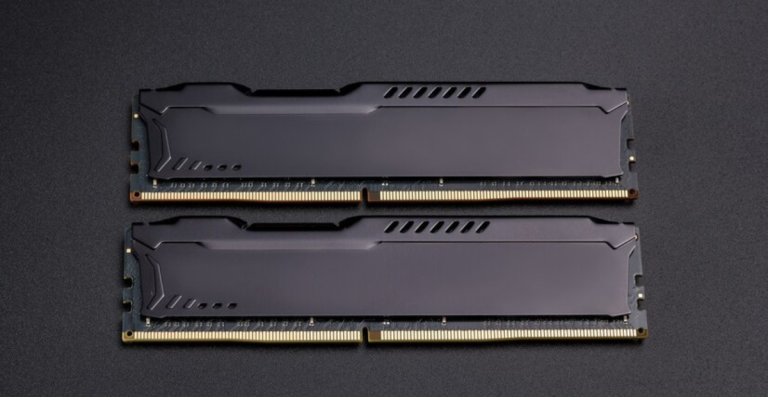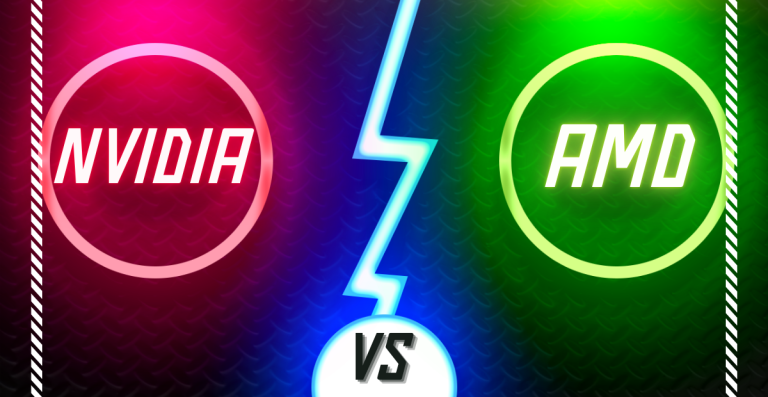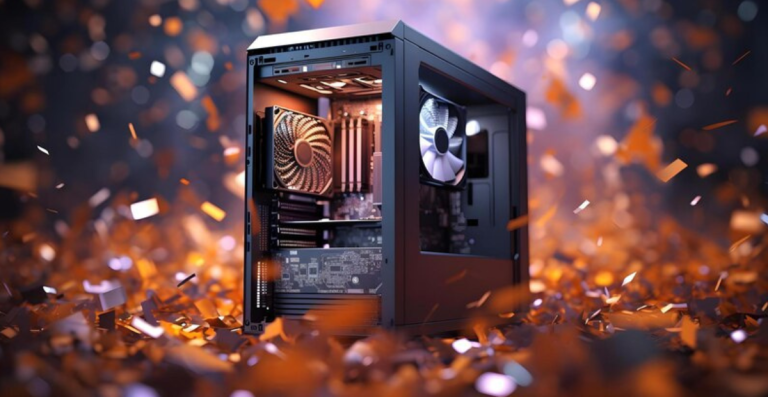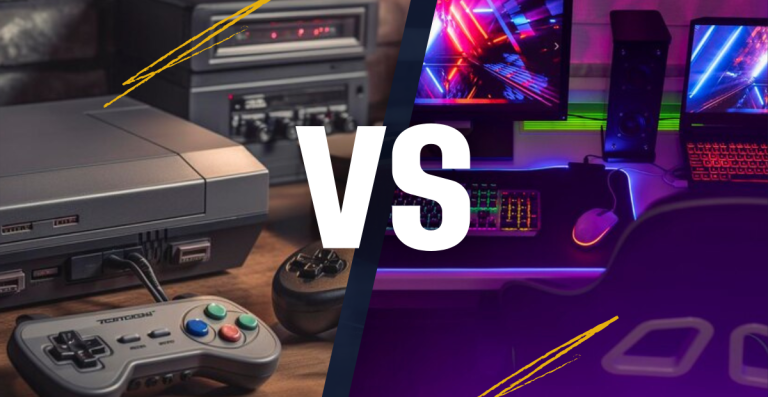Choosing Gaming Monitor Essential Specs for Optimal Performance in 2025
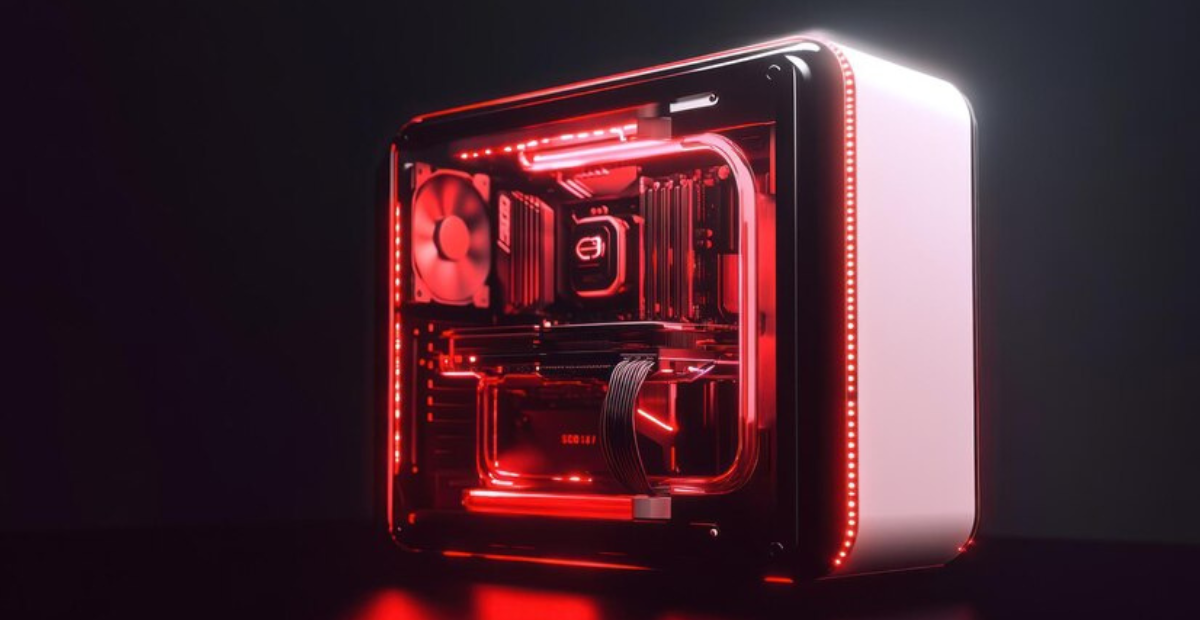
Selecting the ideal gaming monitor involves much more than just screen size or eye-catching designs. Thanks to developments in display technology, gamers can now access monitors with richer colors, quicker response times, higher refresh rates, and more intelligent connectivity. Knowing the essential requirements makes all the difference, whether your goal is fluid competitive play or captivating open-world graphics.
Advanced OLED panels, adaptive sync technologies, and resolutions ranging from Full HD to 4K ultrawide are among the options available today. However, because each model has so many features, it can be challenging to determine what is most important for your setup. Choose the ideal monitor for your playing style by breaking down the most crucial specifications.
Key Features to Consider When Choosing a Gaming Monitor
Gaming monitors have developed into much more than just screens; they are now essential to your whole experience. The specifications of your monitor affect how fluid, crisp, and engaging your gameplay is, whether you are pursuing competitive wins or exploring large open worlds.
Knowing these important factors, such as panel technologies, refresh rates, and color performance, enables you to choose wisely depending on your hardware configuration and gaming objectives.
Panel Types
A gaming monitor’s panel type determines how it presents contrast, manages motion, and displays color. Every panel technology has unique advantages that suit various gaming genres. The first step in selecting a monitor that meets your needs is to comprehend these fundamental variations.
In-Plane Switching (IPS)
Wide viewing angles and vivid color reproduction are two of IPS panels’ best-known features. Because of this, they are perfect for players who appreciate clarity and visual detail, particularly in role-playing games, narrative-driven games, or content creation that requires color.
Many high-end IPS screens in 2025 now offer 1ms response rates, which makes them competitive for fast-paced games as well, even though they typically have slightly slower response times than TN panels.
Vertical Alignment (VA)
VA panels are excellent at creating high contrast and deep blacks, which gives games a cinematic appearance. Compared to IPS or TN, they provide superior image depth and work well in darker gaming environments. Modern models have significantly improved in this area, making VA monitors a good middle-ground choice. However, their slower pixel transitions may cause slight ghosting during fast motion.
Twisted Nematic (TN)
Speed is a top priority for TN panels, which provide the fastest response times and highest refresh rates at competitive prices. They are therefore perfect for players who want to compete in fast-paced games like esports and first-person shooters.
They do have some drawbacks, though, such as smaller viewing angles and less accurate color reproduction than IPS and VA panels. Gamers who value performance over aesthetics will benefit most from them.
Better Contrast and Responsiveness with OLED and QD-OLED
The state-of-the-art in gaming displays are OLED and QD-OLED panels. They have lightning-fast response times, perfect blacks, and infinite contrast thanks to pixel-level lighting control. Quantum dot technology is added by QD-OLED to improve HDR performance and produce brighter colors.
Although these panels typically have high price tags and need to be handled carefully to prevent image retention, they are ideal for immersive gaming experiences and display the best visuals available.
Resolution and Screen Size
Sharpness and detail are directly impacted by resolution, which determines how many pixels show up on your screen. The distribution of those pixels varies with screen size. They work together to determine how demanding, immersive, or clear your gaming experience will be.
Finding the Perfect Visual Clarity:
1080p (Full HD – 1920×1080 pixels)
Competitive gamers continue to favor 1080p (Full HD, 1920 x 1080 pixels). It functions well on 24 to 25 screens and is simple to use, even on mid-range GPUs. Perfect for esports games where high frame rates are more important than high resolution, such as CS2 or Valorant.
1440p (QHD – 2560×1440 pixels)
Without putting as much strain on the GPU as 4K, 1440p (QHD, or 2560 x 1440 pixels) provides a significant sharpness boost over 1080p. Excellent for multitasking, action, and role-playing games. It pairs well with GPUs such as the RTX 4070 or RX 7800 XT and performs best on 27-32″ monitors.
4K (UHD – 3840×2160 pixels)
4K (UHD, or 3840 x 2160 pixels): Offers unparalleled visual clarity. Ideal for open-world or cinematic games such as Cyberpunk 2077. But it requires a lot of GPU power (RTX 4080, RX 7900 XTX, etc.). works best on monitors with a pixel density of 28″ or more.
Ultrawide Resolutions’ Immersive Experience
For a more panoramic view, ultrawide monitors extend the horizontal resolution:
- 3440×1440 (UWQHD): Common on 34″ curved screens, 3440×1440 (UWQHD) is excellent for multitasking, MMOs, and sim racing.
- 5120×1440 (Dual QHD): Dual QHD, or 5120 x 1440, is a feature of 49″ super ultrawide monitors. Incredibly GPU-intensive but immersive.
More screen space and immersion are provided by ultrawides, but make sure your GPU can keep up and your games support the aspect ratio.
Refresh Rate and Response Time
Not only does a fast monitor feel more fluid, but it can also give you a significant advantage, particularly in competitive games that move quickly. Response time (measured in ms) and refresh rate (measured in Hz) are two important metrics to keep an eye on.
The Importance of High Refresh Rates (Hz)
Many monitors have a standard refresh rate that is appropriate for everyday use and light gaming. provides fluid graphics, but in fast-paced games, it could feel constrained.
60 Hz
Many monitors have a standard refresh rate that is appropriate for everyday use and light gaming. provides fluid graphics, but in fast-paced games, it could feel constrained.
144 Hz
a well-liked option for gamers, offering significantly more fluid gameplay and less motion blur than 60Hz. Perfect for both casual and competitive gamers.
240 Hz and Higher
Esports professionals and competitive players who want the smoothest and fastest response times are the target audience for high-end monitors with 240Hz or 360Hz.
Reducing Motion Blur with Quick Reaction Times (ms) 1 ms
TN and OLED panels usually have the fastest response times. reduces motion blur and ghosting, making it ideal for competitive gaming.
2–5 ms
frequently found in VA and IPS panels, providing a balance between speed and color quality. ideal for the majority of gamers who desire stunning graphics without compromising responsiveness.
Over 5 ms
Typically seen in older or less expensive panels, it can produce noticeable motion blur and is not the best option for fast-paced gaming.
Synchronization Technology
By adjusting the refresh rate of your monitor to the frame output of your GPU, adaptive synchronization technologies help avoid screen tearing and stuttering.
AMD FreeSync: AMD GPU Adaptive Sync
AMD FreeSync is a widely used technology that synchronizes the refresh rate of a monitor with the AMD graphics card’s frame rate. By lowering input lag and screen tearing, it makes gaming more fluid without requiring expensive, high-end hardware. Many gaming monitors support FreeSync, frequently without charging more.
NVIDIA G-Sync: NVIDIA GPU Premium Synchronization
Similar adaptive sync features are provided by NVIDIA’s G-Sync, although it incorporates extra hardware modules within the monitor. Particularly on NVIDIA GPUs, this high-end technology usually offers the smoothest experience with the least amount of input lag and reliable performance. Because they require additional hardware, G-Sync monitors are typically more expensive, but gamers who want the best quality choose them.
G-Sync Compatible: Increasing Interoperability
NVIDIA also certifies certain FreeSync monitors as “G-Sync Compatible” in order to close the gap. This implies that the entire G-Sync module is not required for the monitor to utilize NVIDIA’s variable refresh rate technology. It provides many of G-Sync’s advantages, but frequently at a lesser price. Verify compatibility by looking at the manufacturer details.
Color Performance and HDR
The monitor’s color capabilities and HDR support are crucial for improving the visuals of your games.
sRGB color gamut
For the majority of monitors, sRGB is the default color space standard. It includes the fundamental color spectrum required for most games and everyday use. Games appear natural and vibrant without being oversaturated thanks to monitors with full sRGB coverage, which guarantees accurate and consistent colors.
DCI-P3 color gamut
Many high-end gaming monitors and professional displays use DCI-P3, which has a wider color gamut. Richer, deeper, and more realistic colors can be used in games because they cover around 25% more colors than sRGB. A monitor with at least 90% DCI-P3 coverage is ideal if you want bright images with more color depth.
Certification for HDR10
The most widely used HDR standard that gaming monitors support is HDR10. Enhancing contrast and brightness range makes details visible in both bright highlights and deep shadows. Generally supporting 10-bit color depth, HDR10 monitors provide more realistic images with smoother gradients.
- DisplayHDR 400: The entry-level HDR certification is this one. With a maximum brightness of about 400 nits, it provides slight enhancements over SDR (standard dynamic range). Although it marginally improves images, it is devoid of the contrast and brightness required for full HDR immersion. Excellent for budget builds or casual gamers.
- DisplayHDR 600: A mid-tier certification that offers enhanced contrast and brightness (up to 600 nits). It provides a noticeable HDR experience with brighter highlights and deeper blacks, making it appropriate for the majority of gaming setups that seek a balance between cost and performance.
- DisplayHDR 1000: This premium HDR certification offers wide color gamut support, local dimming, and a maximum brightness of 1000 nits or higher. For fans looking for the best HDR gaming experience, this level is perfect because it offers vivid, realistic graphics and a lot of contrast.
Contrast and Peak Brightness Ratios
Strong contrast ratios and high peak brightness typically above 600 nits are necessary for a satisfying HDR experience. While a high contrast ratio makes blacks appear deeper, higher brightness aids in displaying vivid highlights. By selectively dimming specific areas of the screen, monitors with local dimming zones can further enhance HDR quality.
Zones of Local Dimming
By independently adjusting backlight zones to boost contrast, local dimming improves HDR. More zones translate into more precise control and higher-quality images, particularly in dimly lit areas. For better HDR effects, high-end monitors have hundreds or even thousands of local dimming zones.
Connectivity Options for a Seamless Gaming Setup
For optimal performance and convenience, your gaming monitor must be connected correctly. The ports, interfaces, and other features that will be most important in 2025 are covered in this section.
The Value of Interfaces and Ports
Compatibility and high-quality signal transmission between your monitor and gaming devices are guaranteed when you have the appropriate ports.
HDMI Ports: Guaranteeing Bandwidth and Compatibility (Including HDMI 2.1)
The industry standard for connecting consoles and PCs is still HDMI. With features like Auto Low Latency Mode (ALLM) and Variable Refresh Rate (VRR), the most recent HDMI 2.1 offers smooth gaming and supports resolutions up to 4K at 120Hz and 8K at 60Hz. HDMI 2.1 is necessary for PS5 or Xbox Series X|S console gamers to fully utilize next-generation graphics.
DisplayPort (DP)
The Standard for High-Performance PC Gaming is the preferred option for PC gamers seeking ultra-high refresh rates at resolutions like 1440p and 4K because it supports more bandwidth than HDMI, particularly version 1.4 and above. Additionally, it supports G-Sync and FreeSync, two adaptive sync technologies.
Audio Output and USB Ports: Increasing Capabilities
Nowadays, a lot of gaming monitors have several USB ports (USB 3.0, USB-C) for external drives, keyboards, and mice. Headphone jacks and line-out ports are examples of built-in audio outputs that make setup easier by enabling headset connections straight to the monitor.
Additional Inputs and Integrated Features
Features on contemporary monitors enhance device management and multitasking.
KVM Switch: Handling Several Systems
Gamers can use a single keyboard, mouse, and monitor to control several computers with a KVM switch. For streamers or users who play games and work on multiple PCs at once, this feature is ideal.
USB-C Connectivity: Adaptability for Contemporary Electronic Devices
USB-C ports support video, audio, data transfer, and power delivery through one cable. This is especially useful for users with laptops or compact setups, reducing cable clutter and simplifying connections.
Built-in Speakers and PIP/PBP Functionality
Some monitors include built-in speakers for basic audio needs. Additionally, Picture-in-Picture (PIP) and Picture-by-Picture (PBP) modes let users view content from multiple sources simultaneously, enhancing productivity and multitasking during gaming or streaming.
Gaming Monitor Recommendations for Different Types of Gamers?
Your budget, hardware, and preferred gaming style all play a role in selecting the best gaming monitor. This guide will assist you in determining which option best suits your needs.
The Best Choices for PC Gamers
Setting Low Response Times and High Refresh Rates as Priorities
Monitors with refresh rates of 144 Hz, 240 Hz, or even 360 Hz and response times under 1 ms are ideal for PC gamers, especially competitive ones. These specifications give you an advantage in fast-paced games like MOBAs and FPS by reducing input lag and motion blur.
Hardware-Based Resolution Considerations
1440p resolution is a great compromise between performance and visual clarity for mid-to-high-end PCs. Although 4K monitors provide amazing visuals, if you have a powerful GPU, maintaining high frame rates requires top-tier hardware. Because they allow for better multitasking and immersive experiences, PC gamers also favor ultrawide monitors.
Top Console Gaming Monitors
PS5 and Xbox Series X|S feature optimization (HDMI 2.1, VRR)
To take advantage of 4K at 120Hz and VRR features, which lessen screen tearing and stuttering, console gamers should seek out monitors with HDMI 2.1 ports. This guarantees that you take full advantage of the capabilities of the next-generation console.
Console Gaming Screen Size Preferences
For console gaming, a screen size of 27 to 32 inches is perfect because it provides an immersive view without taking up too much space in your setup. Some games benefit from ultrawide, but it is less common for consoles because of their limited support.
Choices for Players on a Tight Budget
Locating Inexpensive Gaming Without Giving Up Important Features
Low-cost gamers can still enjoy fluid gameplay with monitors that have 1080p resolution, refresh rates between 75 and 144 Hz, and response times of about 4-5 ms. To improve images without going over budget, look for models that support FreeSync.
Price and Performance Equilibrium
The best value is ensured by carefully weighing features like panel type, refresh rate, and connectivity. For example, a reasonably priced IPS panel with good color accuracy at 1080p and 144Hz can be a great option.
Top Selections for the Greatest Experience
Examining Top-Tier Technologies (OLED, QD-OLED, High-End HDR) High-end gamers can spend money on OLED or QD-OLED monitors, which provide brilliant colors, flawless blacks, and lightning-fast response times. These monitors provide the most immersive visual experience when combined with DisplayHDR 1000+ certifications and large local dimming zones.
Ergonomics and Advanced Features for Fans
Comfort and personalization are increased by features like integrated KVM switches, movable stands, and a wide range of color calibration choices. These monitors frequently come with extra USB-C connectivity for flexible setups and factory calibration for color accuracy.
Ergonomics: Convenience for Extended Gaming
Height, Tilt, Swivel, and Pivot Adjustable Stand
During extended gaming sessions, an ergonomic stand with several adjustment options helps to maintain proper posture and lessen strain. You can adjust the height, tilt, swivel, and pivot to get the ideal viewing angle.
VESA Mount Compatibility: Adaptable Mounting Choices
Compatibility with VESA mounts allows you to use monitor arms or wall mounts, which frees up desk space and enables customized positioning.
Features for Eye Comfort: Flicker-Free and Low Blue Light
For gamers who spend hours in front of the screen, many monitors have flicker-free technology and low blue light settings to lessen eye strain and fatigue.
Final Thoughts
A gaming monitor is an essential component of your whole gaming experience, not just a screen. There is a monitor out there that meets your needs, whether you are a console player aiming for next-generation features, a competitive PC gamer who chases every frame, or a frugal gamer seeking value without sacrificing quality.
It is critical to see past the gaudy marketing jargon and comprehend the practical implications of specifications like connectivity, panel type, HDR level, refresh rate, and response time. Smoother gameplay, crisper graphics, and greater immersion are guaranteed across all genres and platforms when these features are combined properly.
Consider your setup, your playing style, and how long you usually game before deciding. In the long run, you will get the best performance and comfort from a monitor that meets your individual needs rather than just the highest numbers.


